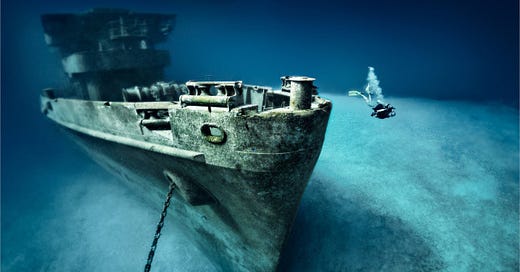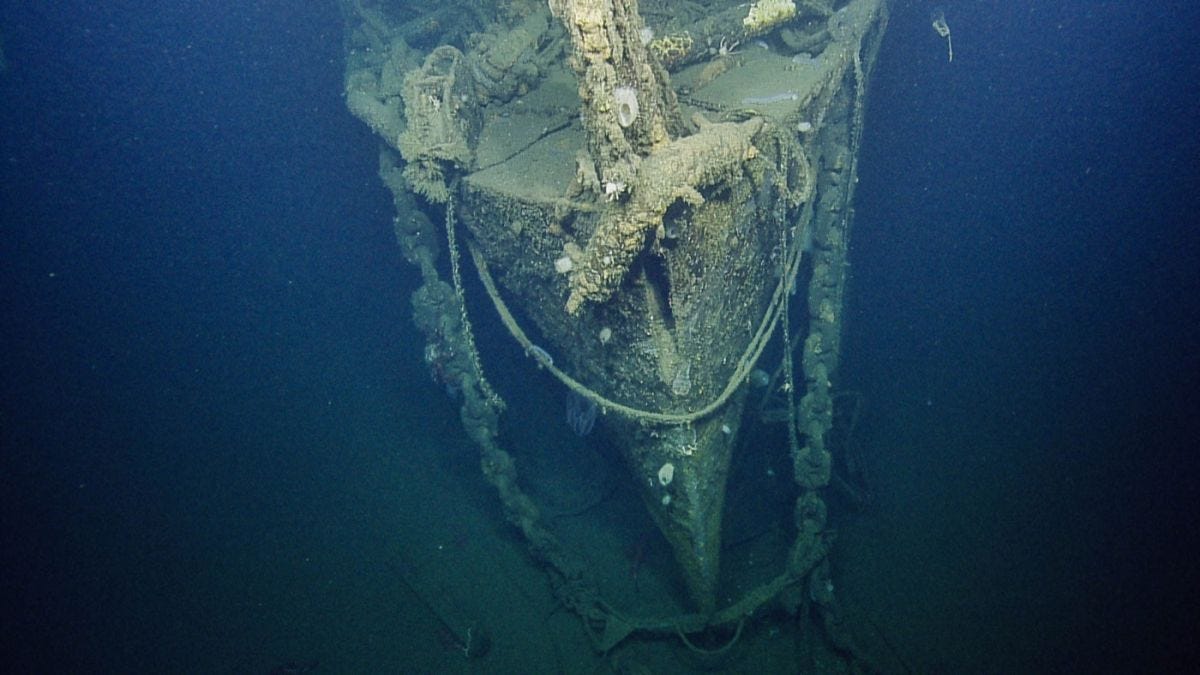The Eerie Story of Low Background Steel
Bandits are plundering metal from old shipwrecks, in search, it seems for the world's rarest, and strangest, metal.
The other week a Chinese vessel was detained by Malaysian authorities off the coast of Johor, under suspicion of having plundered old WWII era shipwrecks in the region.
HMS Repulse and HMS Prince of Wales, both of which sank in Malaysian waters in 1941, have had large sections of their bodies and armaments stolen in this way. The practice has been going on for years - these raiders targeting shipwrecks which are also effectively war graves - but this was one of the rare occasions when someone was seemingly caught in the act.
But why, you might be wondering, would anyone go to these lengths to obtain scrap metal. The price of steel hardly merits this kind of effort and risk. So what are these raiders really after? Gold? Silver? Stolen artworks?
The answer, it turns out, is far more interesting: a very, very rare form of metal. Something called “low background steel”.
Steel itself is one of the cheapest types of metal (an alloy technically) but the type of steel we’re talking about is one of the rarest substances in the world. For low background steel doesn’t contain radionuclides, traces of radiation such as cobalt-60. These trace amounts don’t matter for most uses but when you’re making products highly sensitive to radiation - eg special scientific equipment or Geiger counters - you need this steel.
And here’s the thing: all steel made since 1945 contains radionuclides. To see why it helps to recall that since the era of Henry Bessemer, we have made steel by blasting molten iron with air or, more recently, oxygen. A quick primer on steel manufacture below.
In other words, steel contains atoms which come from the atmosphere at the time it’s made. And on 16 July 1945 the atmosphere all around the world began to change forever. That was the date of the Trinity nuclear test, the first ever. Many tests followed. The atmosphere changed
And so too did every tonne of steel produced after that time. It had and, as far as I can tell still has, v faint traces of radiation (though amounts are diminishing). Nothing harmful to humans. But amounts that can affect the performance of the most sensitive radiation devices.
And with a finite supply of pre-1945 steel, old wreckages have become a lucrative source of this metal. Battleships, subs, guns. Anything above the surface - steel old and new - becomes contaminated with those infinitesimally small amounts of radiation. Old steel left beneath the surface doesn’t.
Sadly this latest episode is only one of many. Pirates have been scavenging these sites for years. It’s shameful. But there seems to be a market for this stuff. And it’s not just pirates. Steel from some of the German fleet scuttled at Scapa Flow in the Orkneys in WWI was supposedly salvaged and used in the manufacture of medical equipment. Lives were saved thanks to these warships, which had a secret second life as a trove of low background steel
Nor is it just pre-1945 steel which is sought after for special uses. So too is lead - much more on this in this excellent Twitter thread. So too is copper and brass.
Now having said all of this, when researching Material World, I asked a fair few steel experts about low background steel and they mostly gave me a blank look. Some said it was just an old wives’ tales, saying that these days metallurgists have come up with clever ways to offset the radiation.
It’s also true that the ambient amounts of atmospheric radiation have fallen so dramatically since the end of recurrent atomic tests that they may now be low enough for this not to be an issue. Indeed, I have a recollection, the last time I was at a steelworks, of looking at the computer display showing the radiation level of the steel coming out of the furnace. It was zero percent.
So it’s worth being a little cautious here. That being said, this still doesn’t explain why some bandits are willing to go to extraordinary lengths to procure this metal. Is this just a conventional salvage operation? Are the pirates deluded or are there really people willing to pay the price for this plundered scrap metal - whether for low background steel or for some other reason entirely?
If you have any insight on this, please do leave a comment. In the meantime, Material World is out next Thursday so we’re gearing up for the official publicity period. Pre-ordered copies are already arriving. If you have yours, let me know how you’re finding it.
Update: here’s a useful piece arguing that while low background steel was indeed a "thing” up until a few years ago, radiation levels these days have dropped to the extent that it isn’t. Provided we don’t drop any more atom bombs.







In my youth I had a student intern job at what was the Atomic Weapons Research Establishment at Aldermaston in the UK. The chambers they used for counting low-level radiation were made of battleship steel for the reason you describe - any background radiation would interfere with the count.
I was told at the time that steel blast chamber linings had a slightly radioactive layer in the lining to show when the lining was getting too thin and needed replacing, but you are correct that the atmosphere also had low radiation levels - after all in the sixties we were drinking radioactive milk from the strontium-90 from nuclear tests.
Radiation counting chambers is a pretty niche market, but it is there:)